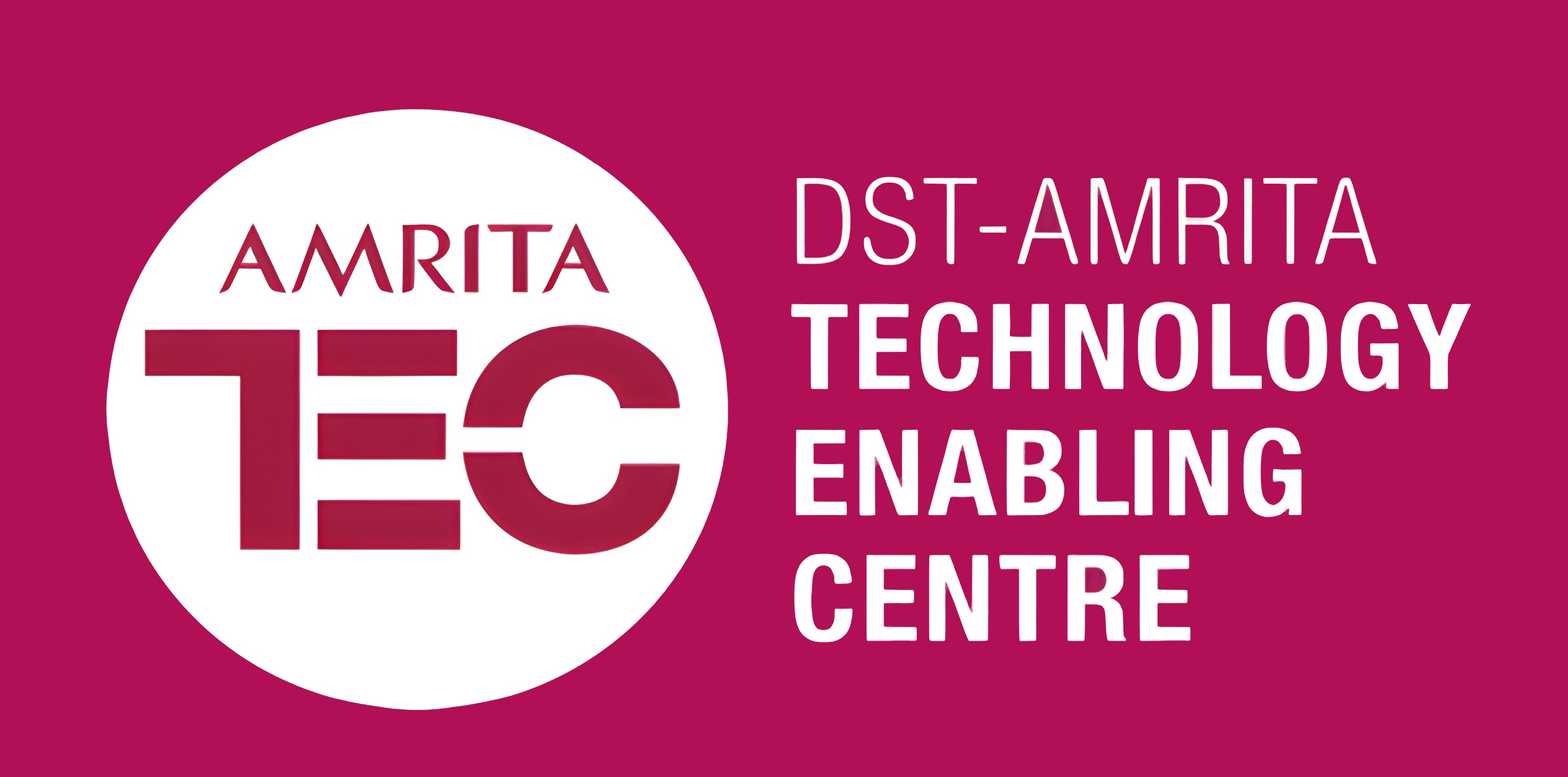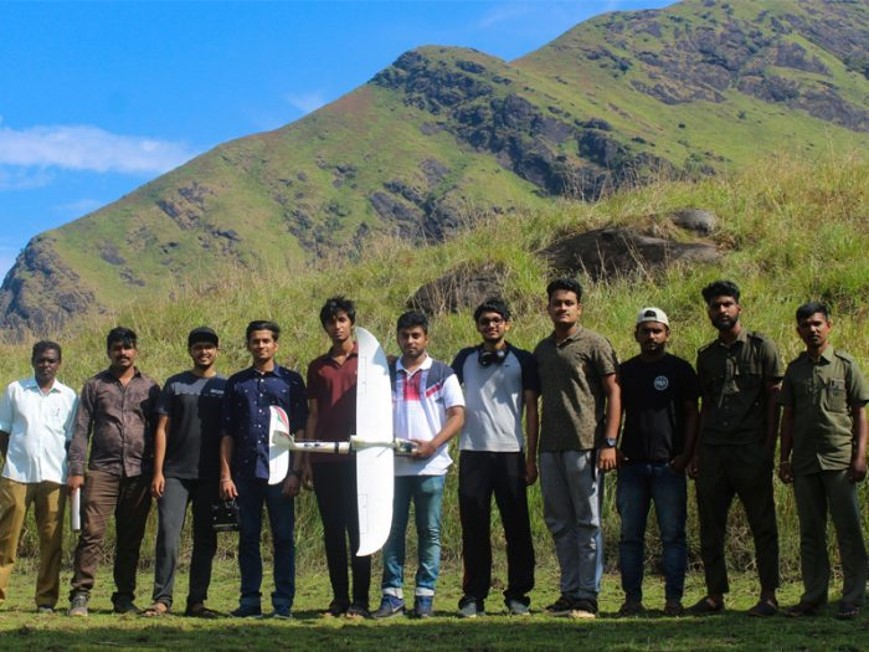
Early Forest Fire Detection.
The satellite-based forest fire alert system is used in many states nationwide. Satellite imagery takes landscape photos of the affected region. It relays them to the forest officials after a gap of two days, making it difficult to stop the spread of the forest fires immediately. The Early Forest Fire System uses Unmanned Aerial Vehicles that can detect fires at an early stage and provide live streaming of the location to forest officials to avoid a false alarm. The communication part is made active if a normal fire image is detected. In a smoky environment, the sensor part of the glider is made active to check the amount of carbon dioxide in the atmosphere. The notification is sent to the Forest Department based on the abnormal Carbon dioxide levels.

Electric Vehicle Chargers.
Level 1 and Level 2 charging stations AC (Alternating Current) technology. Level 1 chargers are for slower charging for use in apartments, and Level 2 offers faster charging speeds and can be used in commercial buildings, charging stations and battery-swapping facilities. It is a easy plug in Socket Type Charging for EV.
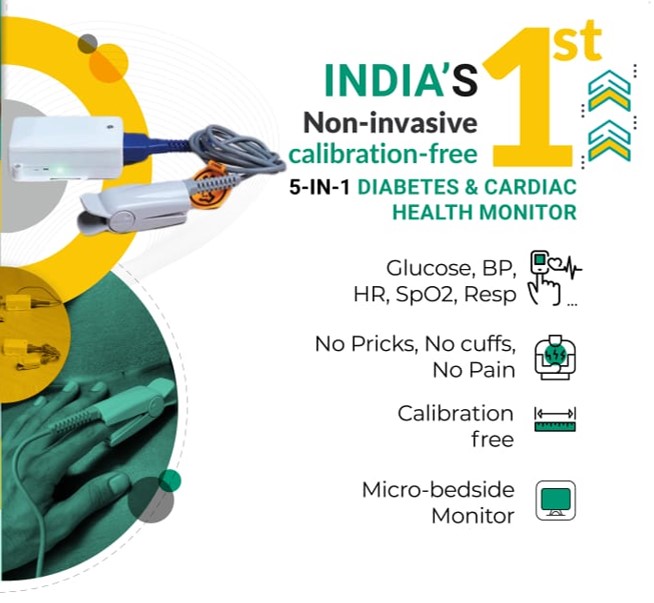
Remote Patient Monitoring System (5-in-1 Device).
A low-cost and wearable patient monitoring system has been developed with medical alert technology, providing real-time monitoring of blood pressure, blood sugar, and SpO2 levels. This non-invasive device utilizes cuff-less methods for estimating blood pressure and integrates MEMS sensor designs for blood pressure measurement. Additionally, it incorporates sensor designs for SpO2 and glucose level using NIR spectroscopy. The measured values are wirelessly transmitted to the doctor's phone, enabling efficient healthcare services for patients in rural villages without access to tertiary healthcare facilities.
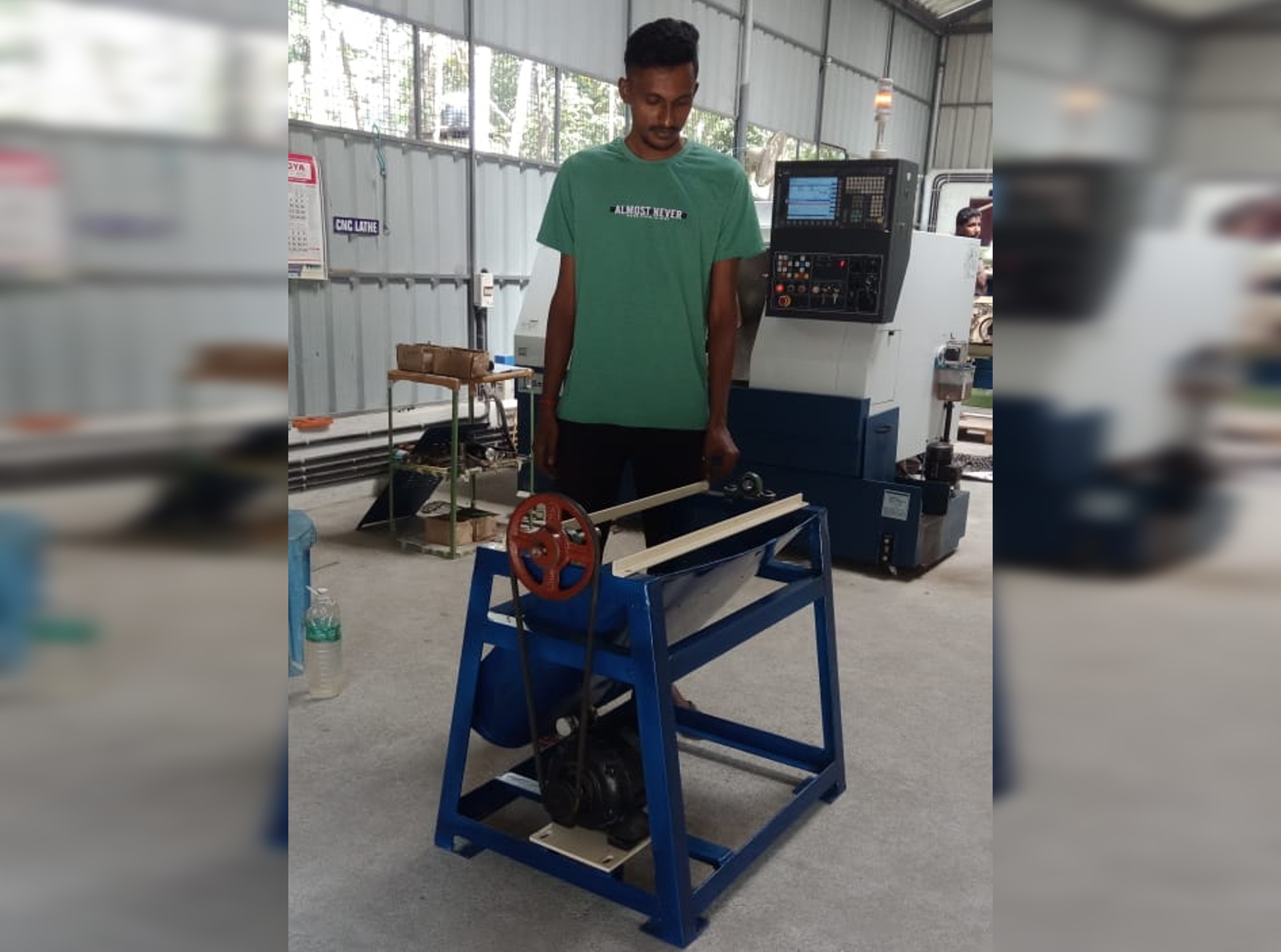
Banana Fiber Combing Machine.
The banana fiber combing machine mechanically processes banana plant fibers, removing impurities and aligning the strands for usability. Through a series of rollers or combs, it untangles fibers, enhancing their quality for textiles and crafts. It is Vital for sustainable industries, it transforms banana waste into valuable, eco-friendly materials efficiently.
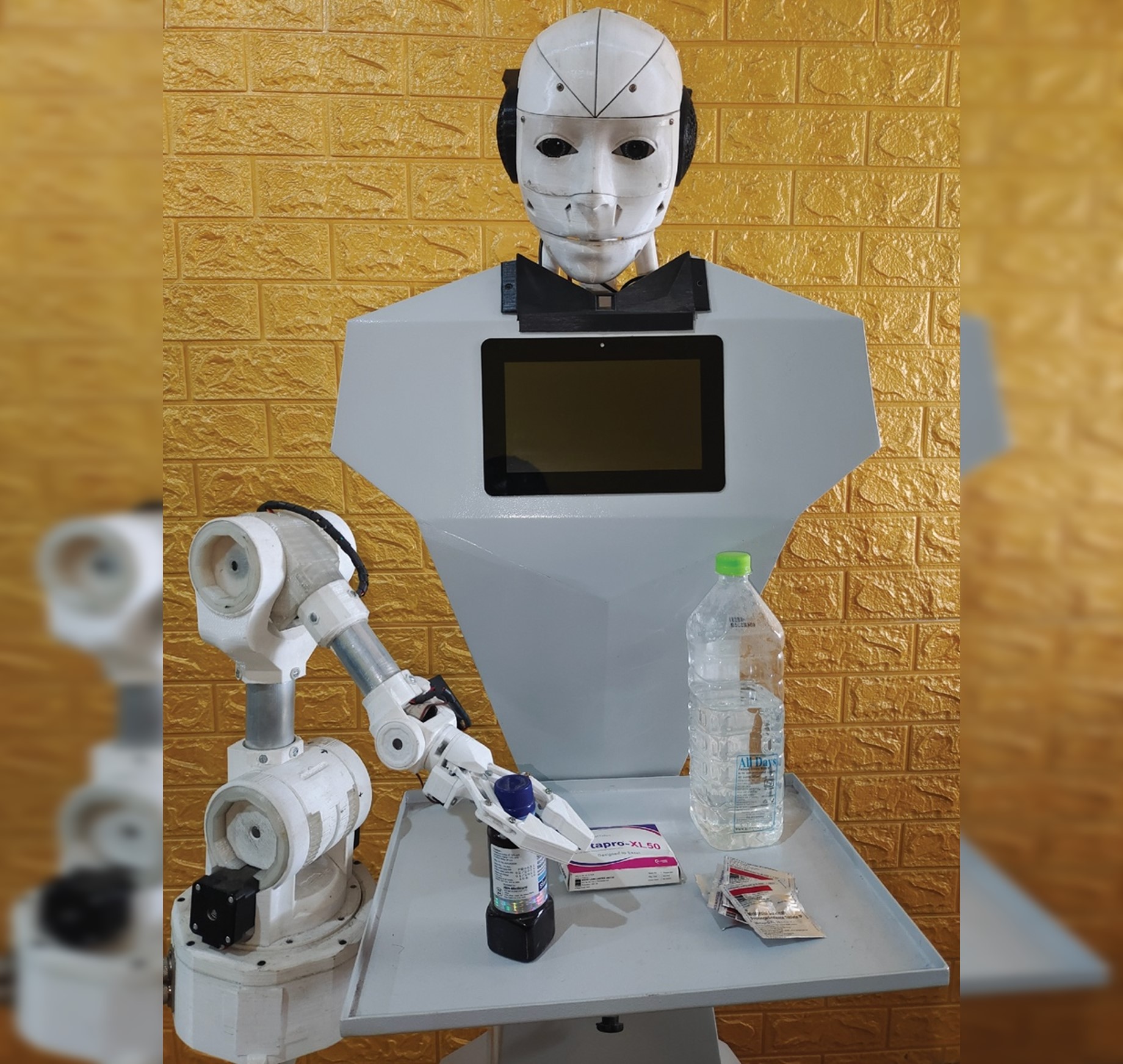
Nursing Robot.
The hospital and elderly care robot boast a sturdy body fabricated from MS and Aluminum, ensuring durability and stability. Its 3D-printed robotic arms feature six degrees of freedom (DOF) each, controlled by Arduino Nano microcontrollers and 12 servo motors for precise movement. The robot's head integrates an 8-inch touch display, a depth camera for 3D mapping and monitoring, and a Raspberry Pi processor for intelligent operations. Utilizing Moveit Package in ROS, it offers seamless arm control, making it ideal for tasks like patient assistance, medication delivery, and monitoring vital signs in hospital and elderly care settings
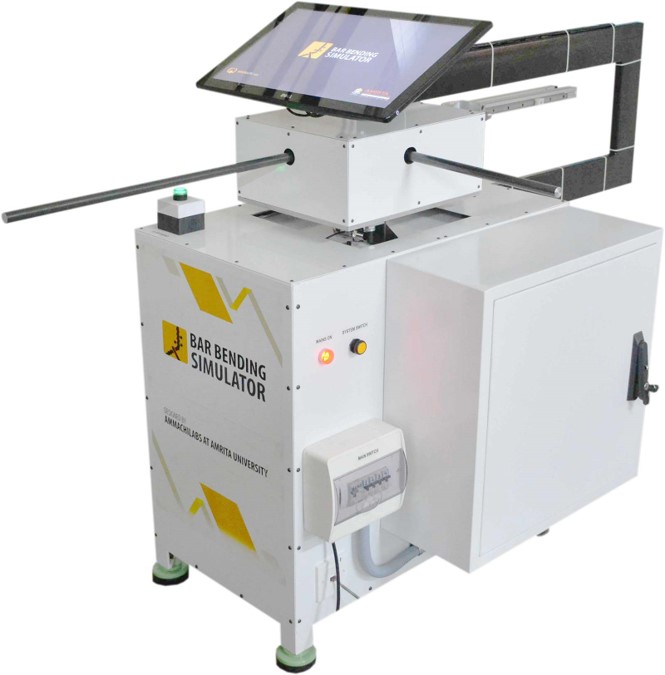
Haptic Bar Bending Machine.
The Haptic Bar Bending Machine is a novel training simulator for construction rebar bending. It combines virtual reality with tactile feedback to simulate the process of sizing and bending steel reinforcing bars. Trainees receive realistic haptic, visual, and audio feedback within a virtual environment, enhancing their understanding and skill development. This innovative system is utilized for training novices in the construction industry, improving their proficiency in rebar manipulation for safer and more efficient construction practices.

Biomethane from Rice Mill Effluent.
Rice milling, integral to India's food production, poses significant wastewater treatment challenges due to its high volume and complex composition. Conventional methods like physicochemical treatment often fall short, leading to violations of pollution control norms and environmental degradation. However, emerging techniques, such as integrated aerobic-anaerobic approaches, electrocoagulation, and biogas production, offer promise. These methods, coupled with advancements in biomethane upgrading, present opportunities for more efficient and sustainable effluent treatment. Rigorous research, coupled with a willingness to adopt innovative technologies, is essential to mitigate the environmental impact of rice mill effluent while unlocking its potential for resource recovery, energy generation, and environmental sustainability.
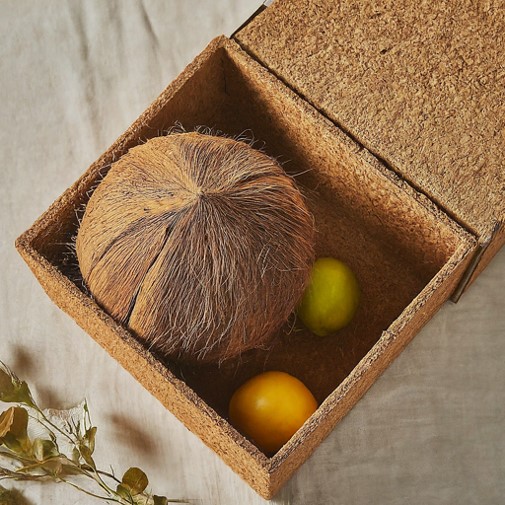
Coir packaging.
The sustainable Coir Packing Box is crafted from natural coir fibers, renowned for their strength and eco-friendliness. Designed for durability and affordability, it offers excellent protection for various products during transport and storage. Coir's inherent properties, such as biodegradability, moisture resistance, and insulation, make it ideal for packaging.
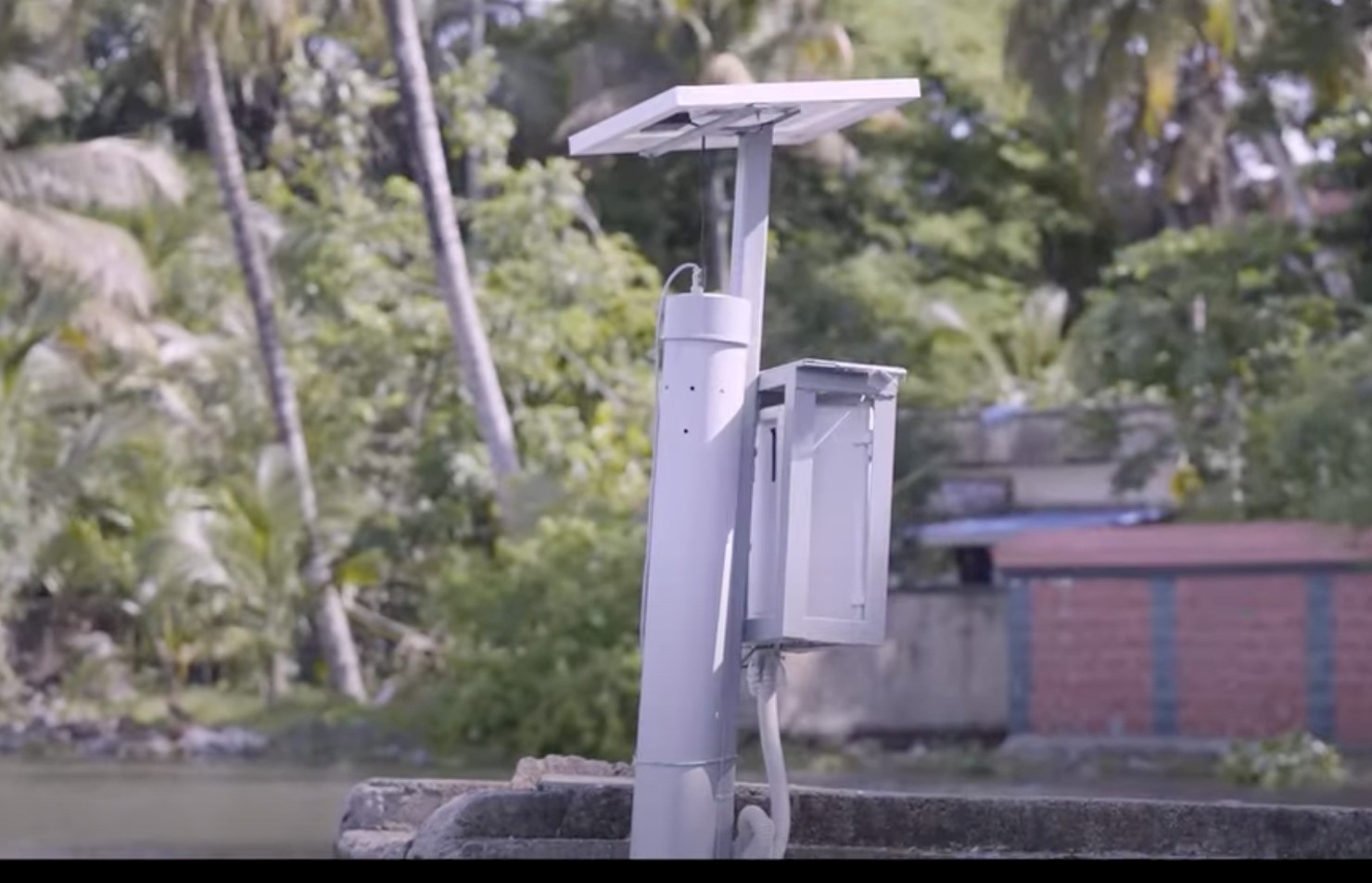
IOT Enabled smart flood monitoring system.
The IoT-enabled Flood Monitoring Device is a compact and efficient solution designed to provide real-time flood alerts to rural villages. Equipped with sensors to detect water levels and weather conditions, it transmits data wirelessly to a central system or mobile app. This device offers crucial early warnings, enabling villagers to take timely preventive measures, evacuate if necessary, and mitigate flood-related risks. Its low-cost, easy-to-install design makes it particularly suitable for remote areas prone to flooding, enhancing community resilience and disaster preparedness.

Haksh-E Robotics.
Haksh-E Robotics is an initiative focused on developing AI-powered social robots designed to promote positive behavioral change in children, particularly in the area of hand hygiene. Haksh-E Robotics addresses a crucial public health challenge by leveraging technology to encourage healthy habits in a user-friendly and engaging way for young children
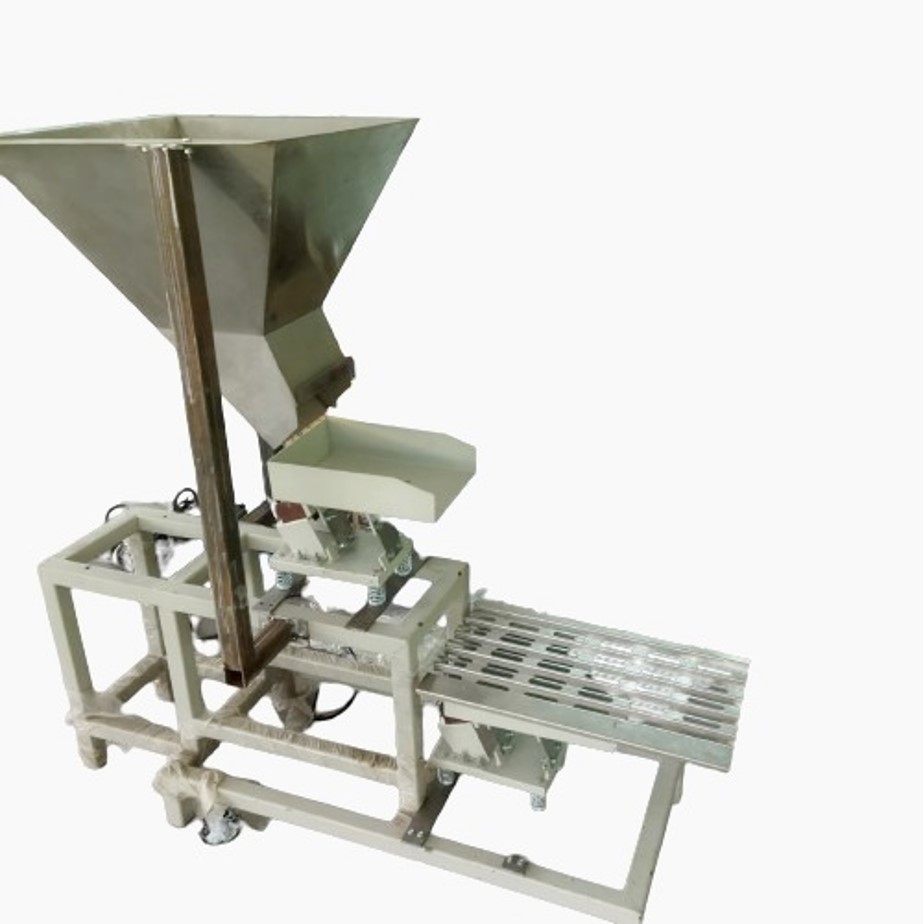
Cashew Sorting Machine.
In the cashew processing industry, the adoption of mechanized sorting technology has significantly reduced the need for manual labor and human intervention. By utilizing innovative mechanical sorting methods, such as the plate with variously sized holes, cashew sorting has become more efficient and less labor-intensive. This technology streamlines the sorting process, minimizing the manpower required while maximizing productivity and ensuring consistent quality in the final product.

Netravaad.
Netravaad is an innovative eye sign-to-speech device empowers individuals with speech impairments by translating their eye movements into words and voiced communication. It utilizes camera technology for portability and supports multiple languages, fostering inclusivity and accessibility.
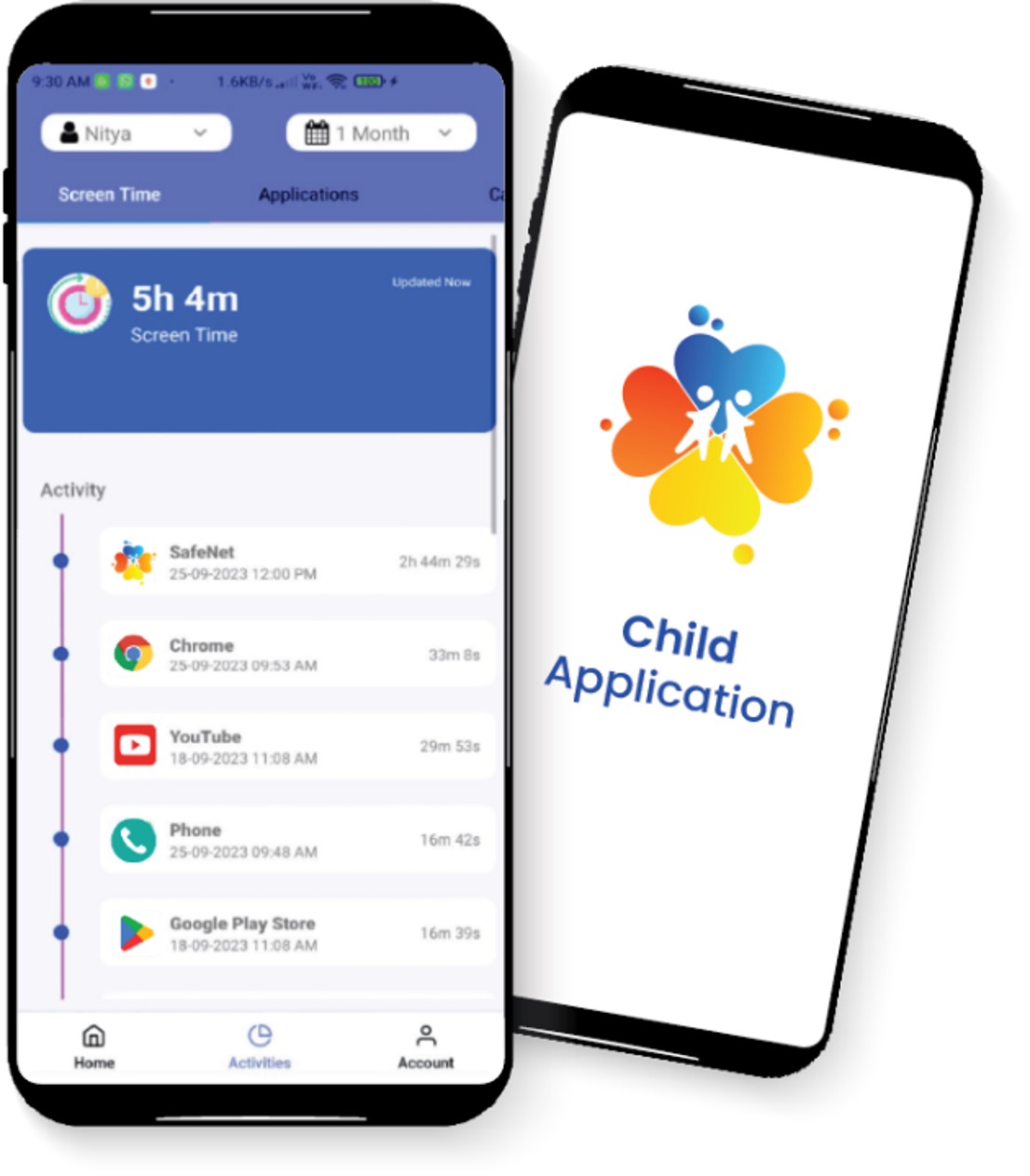
SafeNet.
Smarter online guidance platform to enhance healthier digital growth and welfare and moral traits in children. SafeNet ensures child safety online with advanced web filtering, YouTube insights, live location tracking, app management, screen time oversight, call monitoring, and content filtering. Live interactive sessions promote digital well-being.
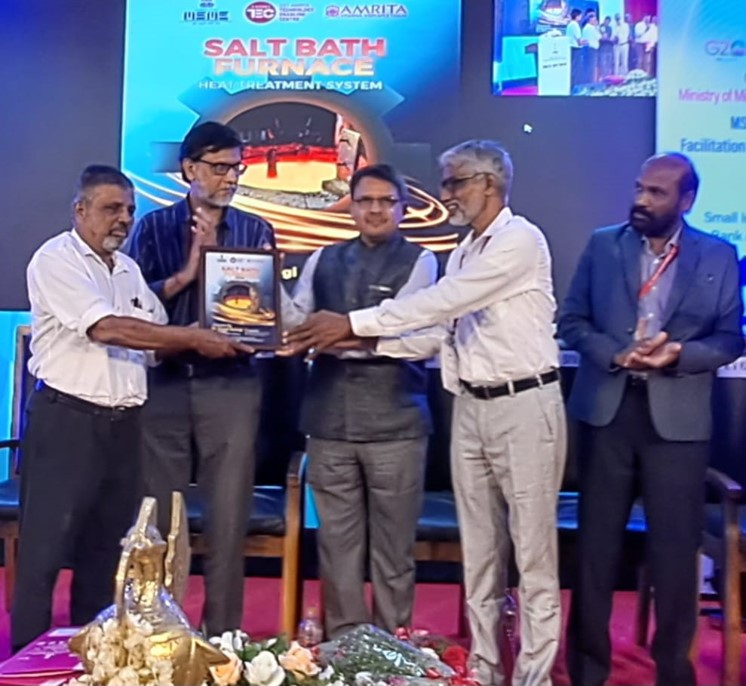
Saltbath Hardening Furnance.
Saltbath Furnace is an innovative furnace that addresses the specific needs of small-scale knife manufacturers by operating on a low connected load of less than 20kW, eliminating the need for expensive transformers. This allows for efficient and economical operation and helps to achieve consistent quality.
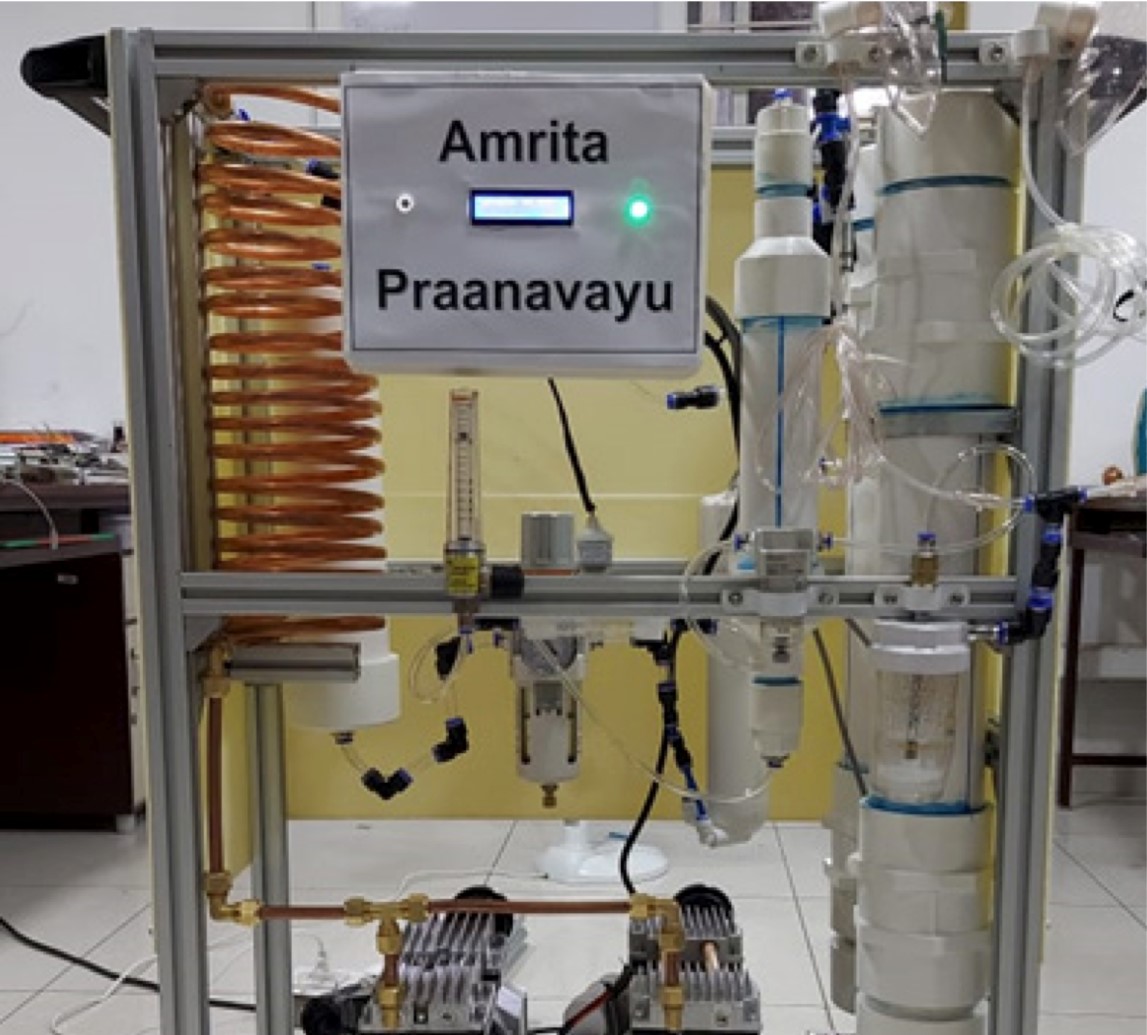
Pranavayu.
Amrita Pranavayu is an oxygen generator which can be used in hospitals and high-altitude areas. This is portable and useful for patients with breathing difficulties. The generator can work with any zeolite materials. It can supply 12-15 litters per minute of 95+% pure oxygen.

Waste Plastic to Tiles.
This innovative technology utilizes a patented, cost-effective approach to transform low-value plastic waste into valuable products. Through unique and economical recycling methods, the technology reuses waste plastic in various applications, resulting in products with properties comparable to virgin plastics.
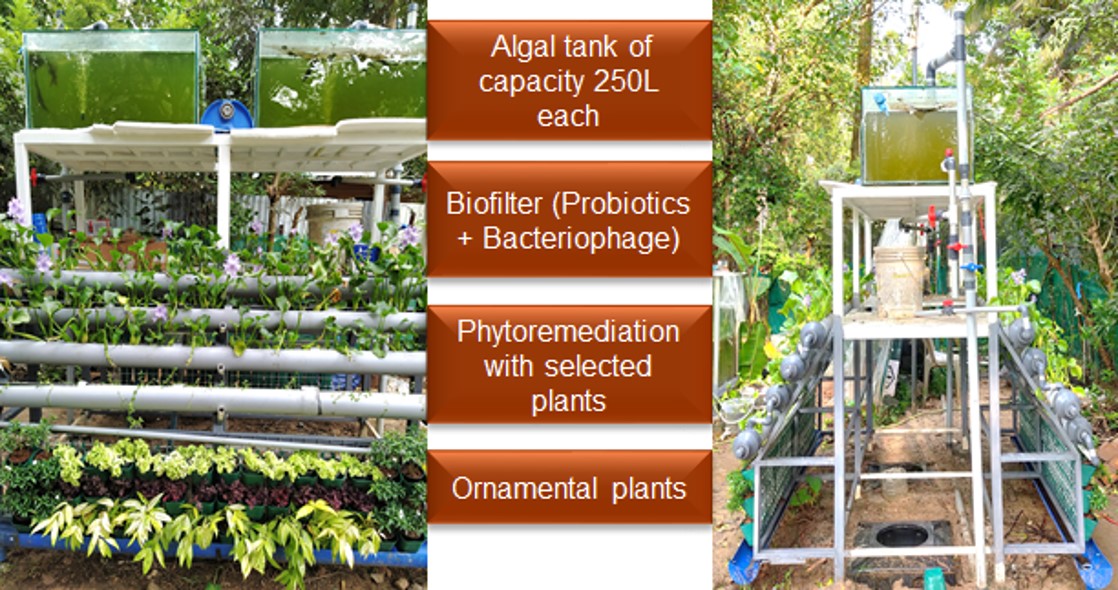
Bio Filter Technology.
The Innovative biofilter technology utilizes bacteriophages, specific algae, bacterial consortia, biological control agents, and aquatic plants to treat toilet wastewater, purifying it for reuse in agriculture and fisheries. This innovative solution addresses the urgent need for sustainable wastewater management in both rural and urban areas.

Amrita Dynamic Regional Landslide Early Warning Platform.
The technology utilizes wireless sensor networks to issue real-time alerts before landslides, facilitating timely evacuation efforts. It boasts four key features: biological system mimicry for network accuracy, self-healing capability in case of nodal failure, online signal availability for real-time analysis, and globally optimal decision-making without central data transmission. Comprising embedded earth probes and a hierarchical network structure, it enables large-scale data collection, power optimization, and network reliability.
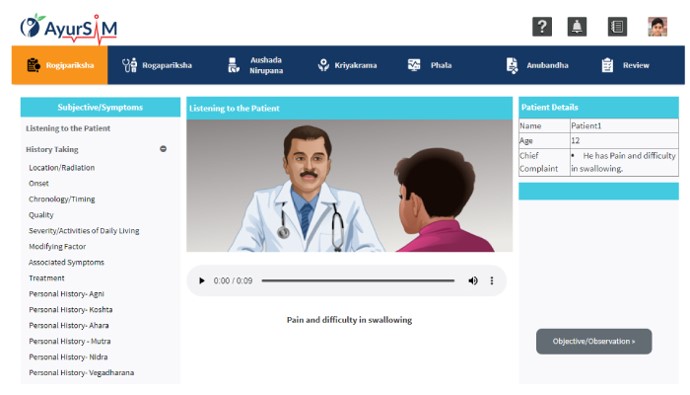
Ayursim.
Ayursims is First-ever virtual simulation tool for Ayurvedic clinical training. It Offers 54 simulated cases across 9 specialties. It Allows students to practice & receive feedback in a safe, interactive environment.

Bhuja.
“Bhuja“, a Low Cost Six Degrees of Freedom Collaborative Robotic Arm. “Bhuja” has multiple applications, including chip industry, medical robotics, heavy industry, service robotics, and disaster management.
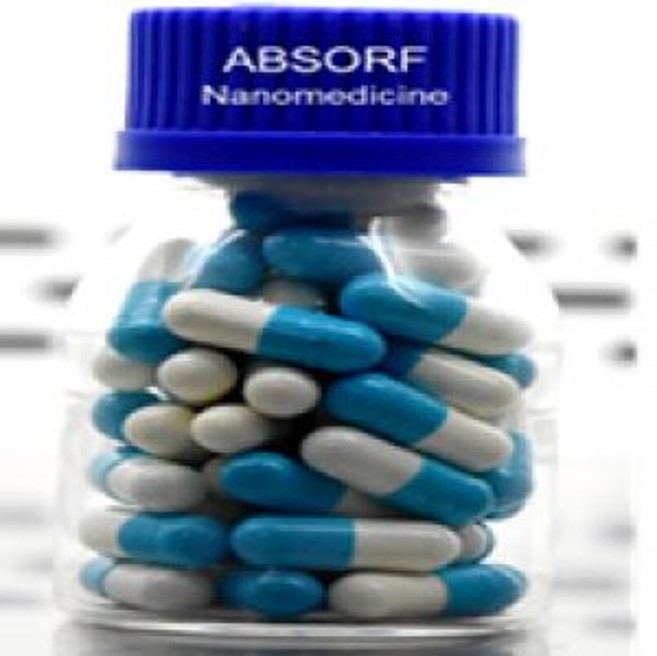
Amrita ABSORF.
Amrita ABSORF is, first of its kind oral sorafenib nanomedicine focusing towards the treatment of Hepatocellular carcinoma and FLT-3 ITD AML.Protein nanoparticles loaded with sorafenib tosylate (API) formulated with mucoadhesive/mucopenetrating excipients into oral dosage forms (capsules).ABSORF improved the pharmacokinetics: 02-03 fold enhanced oral bioavailability compared to that of current clinical formulation (NATCO Pharma Ltd). ABSORF enhanced the antitumor efficacy in orthotopic hepatocellular carcinoma in SD rat models at half dose compared to that of current clinical formulation (NATCO Pharma Ltd).

Gliocure Wafer for Brain Tumor Treatment.
Product description: Amrita Gliocure wafer is a drug eluting polymeric implant made of biocompatible polymers and is intended to release chemotherapeutic agent BCNU (Carmustine) in the brain for a period of up to 30 days in a sustained fashion without systemic leakage.
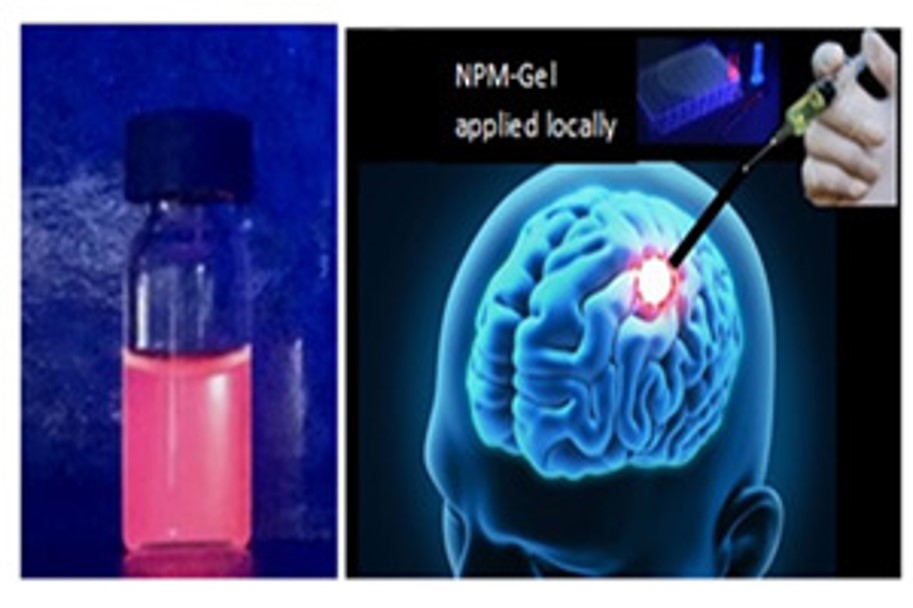
Photo-activated Injectable Nanoparticle Gel for Brain Tumor Treatment.
Product description: Amrita-LI Glio-Gel is a light activated injectable nanoparticle gel for the treatment of recurrent glioma. The therapy is known as nano-Photo Dynamic Therapy (PDT), in which the drug loaded nanoparticles gel is applied in the tumor cavity and activated by laser light to kill the residual tumor cells. The nano-gel PDT therapy will be done after the removal of main portions of brain tumor. The product is licensed to Lead-invent Pharma Inc for clinical translation.
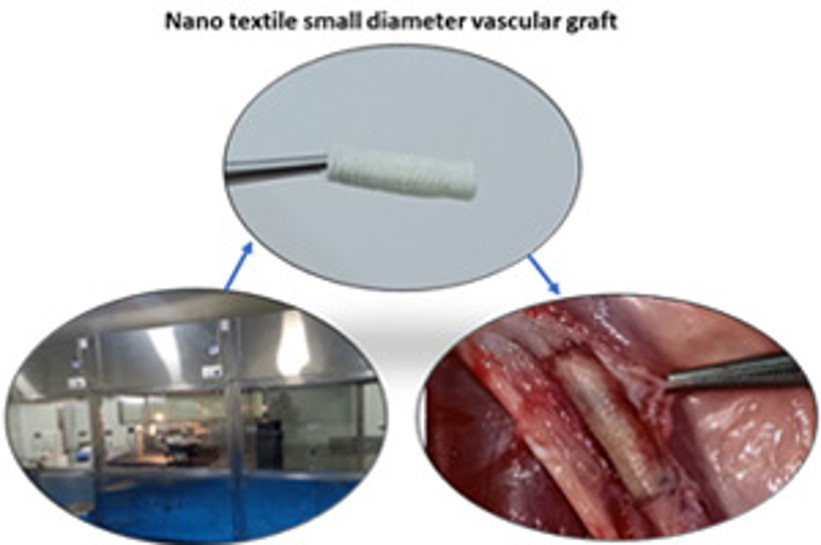
Nano-Textile Small Diameter Vascular Graft.
Product Description: Small diameter vascular grafts (3-5 mm) made up of PLLA nanoyarns were developed by the textile technique of weaving. Mechanical properties of nanotextile graft were tested as per ISO standards and optimized. Biocompatibility of the nanotextile graft was assessed in vitro as well as after implantation in rabbit aortic artery. Large animal studies to evaluate the safety and efficacy of the small diameter graft are underway in ovine model.
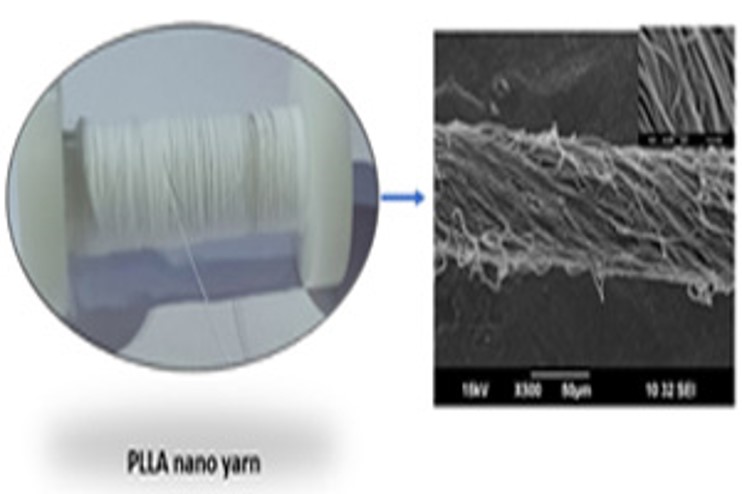
Polymeric Nanoyarns.
Product description: Nanofibrous poly L-lactic acid (PLLA) yarns used as a raw material to enhance the mechanical property of nanocomposite bone implants developed at Amrita. PLLA yarns with mechanical strength in the range 10-20 MPa and yarn diameters of 150-350 µm, consisting of fibers with 800-1500 nm dimensions, have been developed.

Nanotextured Coronary Stents.
Metallic coronary stents made of Cobalt Chromium and Stainless Steel have been surface textured to generate a uniform surface titania nanotopography, which did not alter the mechanical or handling characteristics of the stent, but provided an enhanced in vivo response in terms of reduced intimal hyperplasia after implantation in rabbit iliac artery.

Mandibular Augmentation Bone Graft.
Mandibular Augmentation Bone graft is a ‘Fibrous Composite’ of Silica coated HA-Gelatin matrix reinforced with PLLA fibrous yarns. It is porous, mechanically stable (tough material) and biodegradable, which can promote bone regeneration in critical size defect that occur due to trauma or tumour excision in mandible. It also enhances osseointegration with dental implants for functional tooth restoration.
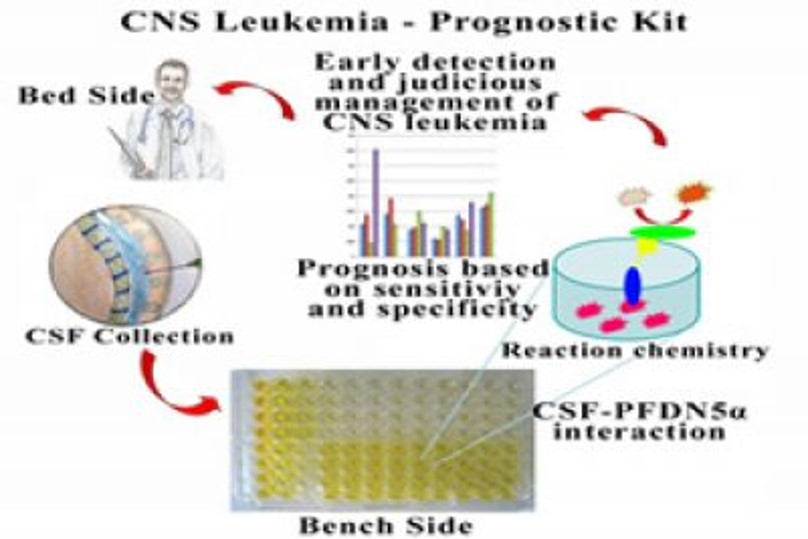
A Prognostic Kit for CNS Leukemia Prediction in B-ALL Patients.
Prophylactic intrathecal chemotherapy is administered to patients diagnosed with B-ALL irrespective of central nervous system (CNS) involvement. The chemo burden has severe side effects in adults and particularly in children with respect to their brain development as a patient who may not have the disease also treated prophylactically with chemodrugs which are toxic to CNS. Thus, development of a prognostic marker for early prediction of CNS leukemia in B-ALL patients is extremely important. Here we developed a prognostic kit using ELISA platform technology to predict an impending CNS leukemia in a B-ALL patient. The approach would provide relief to patients suffering from B-ALL in terms of chemo burden, monetary constraints and clinicians can have judicious management of CNS leukemia.
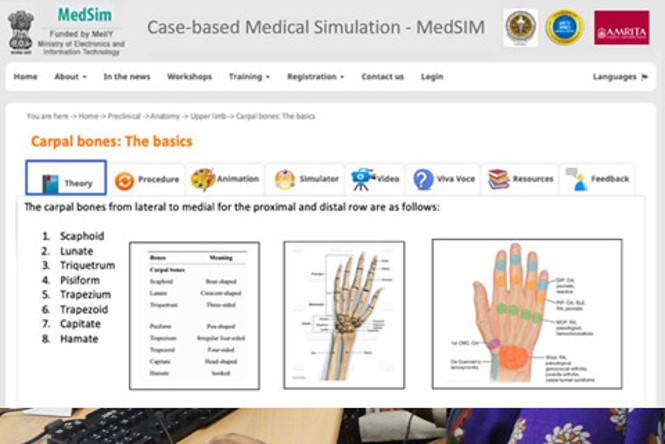
MedSIM 2.0.
MedSIM 2.0 represents the next generation of medical education through an interactive e-learning platform. This advanced system offers three primary modules - "Preclinical," "Paraclinical" online skills lab, and "Clinical" Virtual Patient Cases - designed to cover significant areas of undergraduate medical courses. Its key features include integration of 2D and 3D animations for immersive case-based learning, deliberate practice, and feedback mechanisms for skills development. Unique to MedSIM 2.0 is its emphasis on tailored pedagogy and user interface aspects, ensuring an optimal learning experience for medical students. By leveraging innovative technologies, the platform enhances accessibility and promotes quality education while addressing the evolving needs of medical training. Its dynamic simulations and interactive experiments facilitate comprehensive learning and contribute to Sustainable Development Goal 3 (Good Health and Well-being) by imparting knowledge effectively.

AI-Powered Ocular Diagnostics.
The advent of artificial intelligence (AI) in ophthalmology has revolutionized ocular diagnostics. Leveraging the transparent nature of the eye, AI algorithms can swiftly capture high-resolution digital images of various structures such as the cornea, lens, retina, and optic nerve. With just a single click, these algorithms provide accurate diagnoses and assess the severity of ocular conditions. This breakthrough technology is particularly beneficial for patients and primary care doctors who may lack expertise in ophthalmology's intricacies, facilitating prompt and precise treatment decisions.

SREE - Sustainability and Resilience by Community Engagement & Empowerment.
SREE is a cutting-edge geo-enabled platform designed to empower communities by addressing the challenges of sustainability and resilience assessment. By harnessing crowd-sourced data and employing a bottom-up approach, SREE facilitates comprehensive evaluations across various themes including Agriculture, Skills & Livelihood, Education, Health, and Water. Its dynamic data analytics capabilities enable the derivation of spatio-temporal variability for selected parameters, empowering stakeholders to make informed decisions at multiple levels—from household to national. SREE's unique feature lies in its ability to bring together diverse stakeholders on a common knowledge acquisition platform, fostering collaboration and inclusivity. By providing real-time insights and facilitating dynamic decision-making, SREE offers a robust solution for enhancing community-level sustainability and resilience.

